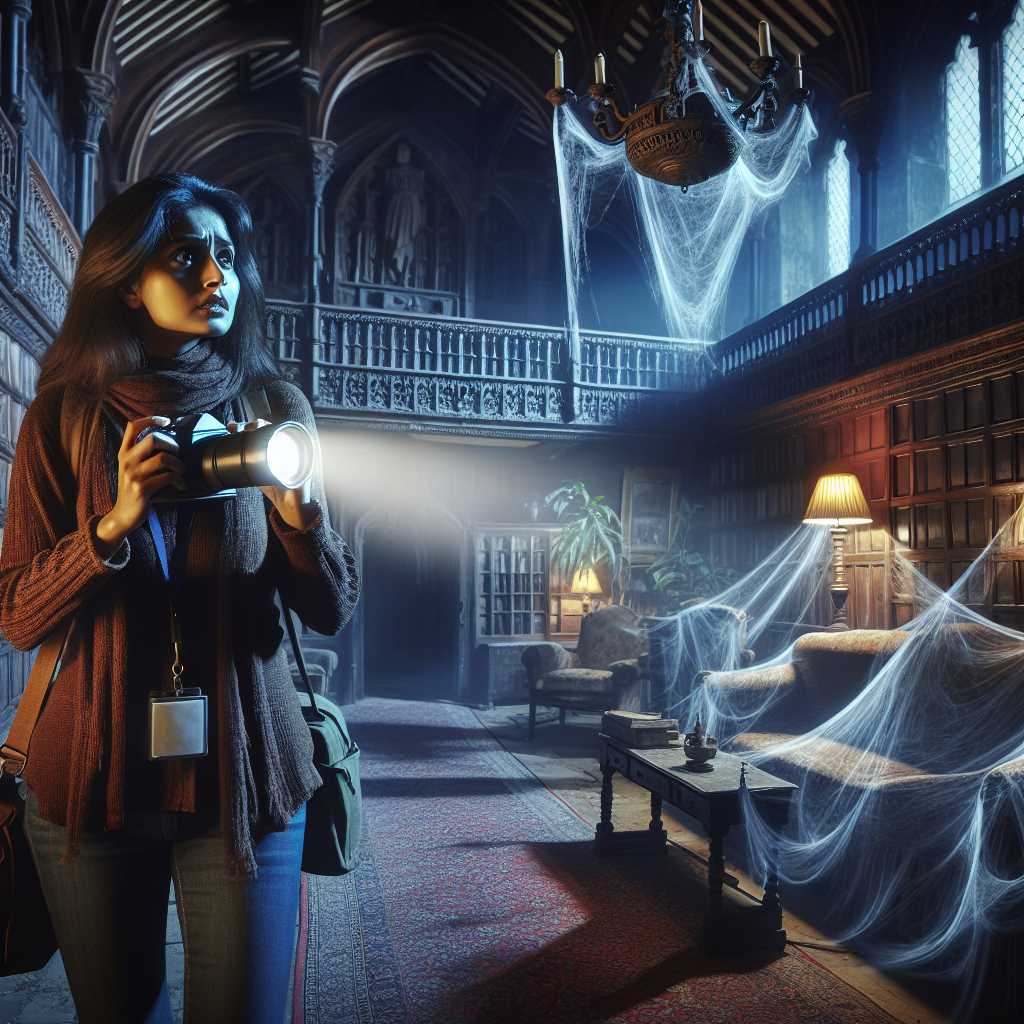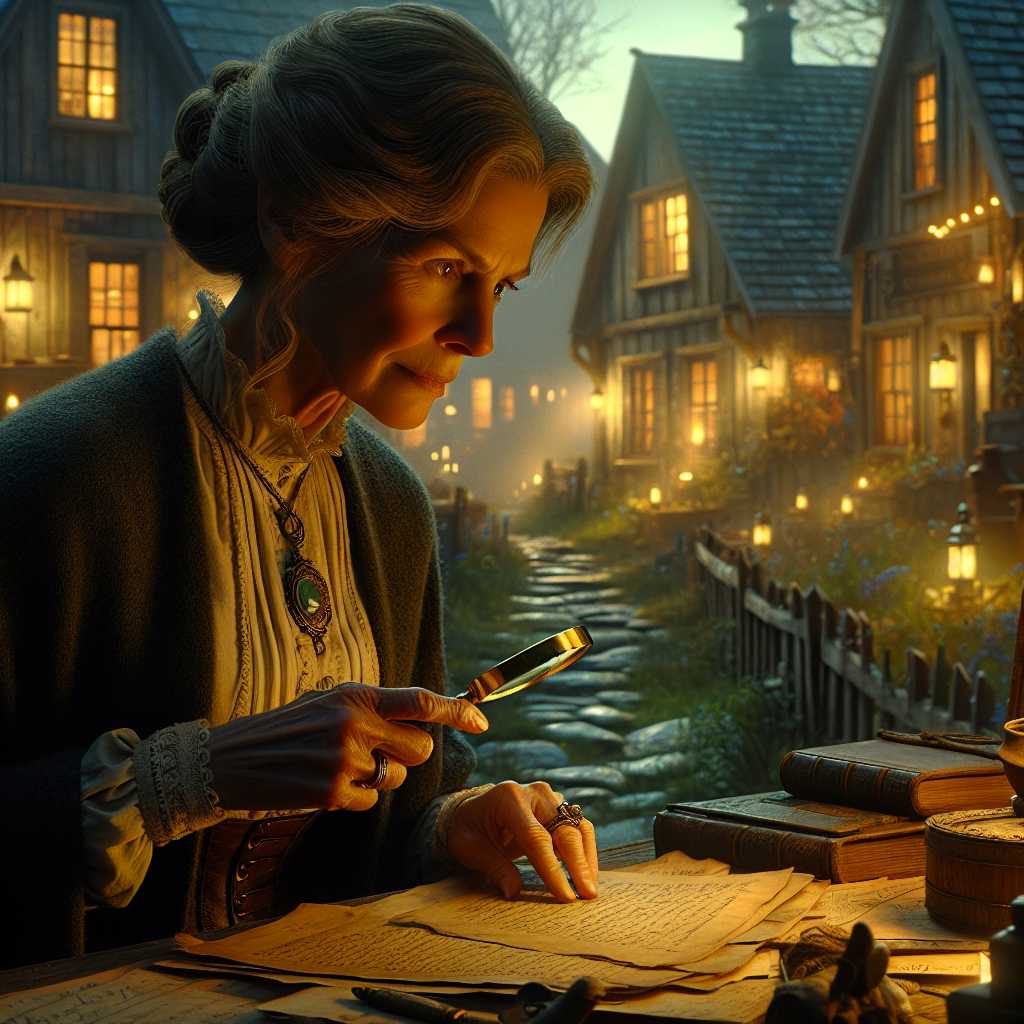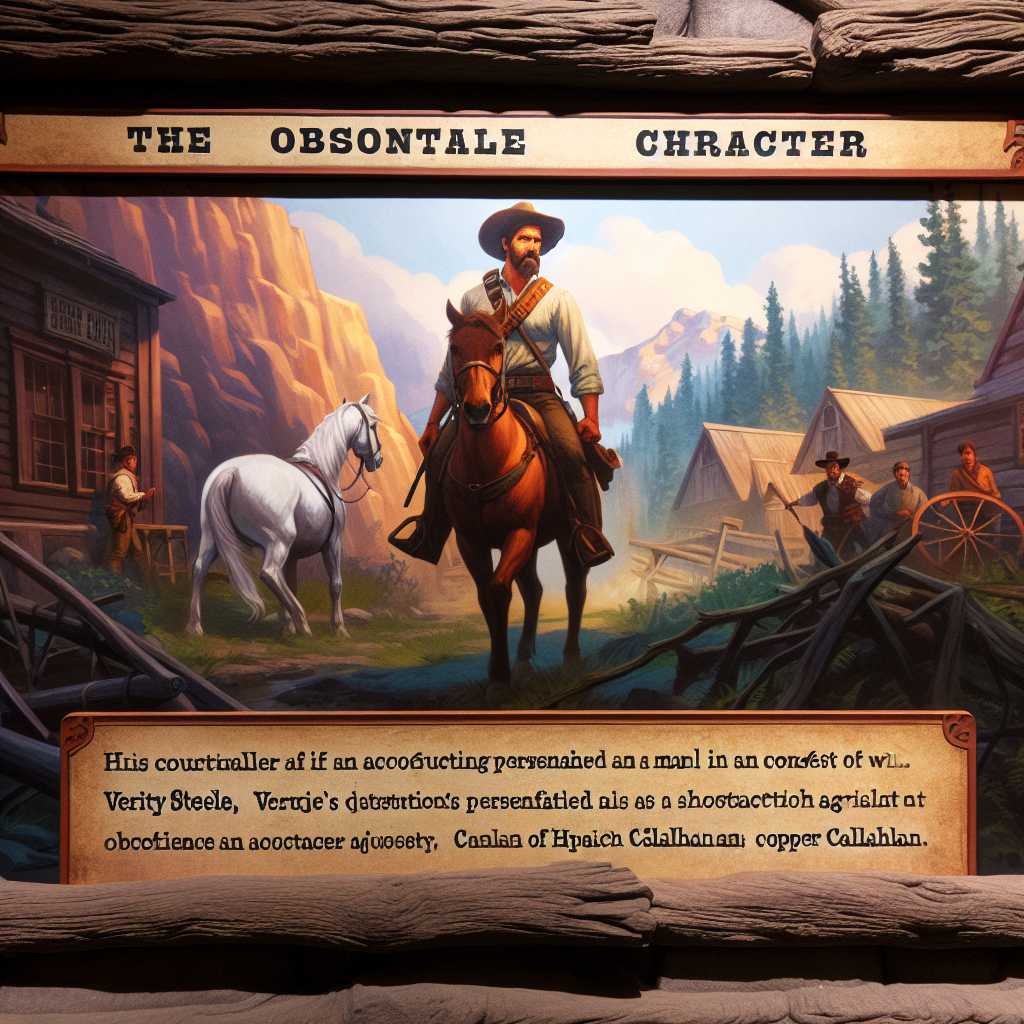
In the heart of the English countryside, amidst the rolling hills and whispering woods, lay the old and enigmatic Ashford Manor. Once the pride of Derbyshire, time had tarnished its magnificence, leaving it swathed in shadows and myths. For decades, the villagers whispered of strange occurrences within its walls, peculiar lights flickering at odd hours, and a chilling presence that could be felt by anyone who dared to venture close.
“There’s something about that manor,” old Mrs. Hazelwood would say, her voice steeped in conviction as she sat by the fireside spinning tales for the children gathered at her feet. “It’s not just a house; it’s a keeper of secrets.”
Those stories, growing more mysterious with each telling, eventually found their way to the ears of Jonathan Reid, an ambitious journalist from London. Driven by curiosity and the promise of a great story, Jonathan set off on a foggy autumn morning to uncover the truth behind Ashford Manor.
The manor loomed like a specter against the grey sky as Jonathan approached. Its windows were like darkened eyes, watching him intently. Undeterred, he forged ahead, pushing open the heavy wrought iron gates that creaked begrudgingly at his touch. A sense of foreboding settled over him, cold and unyielding, but he shrugged it off.
As he reached the grand yet dilapidated entryway, Jonathan discovered the entrance ajar, swinging slightly in the chill wind. He hesitated, feeling the weight of the manor’s hushed secrets bearing down upon him, before stepping inside. Dust motes danced in the slivers of light that pierced through cracked windows, creating an ethereal ambiance. The air was thick with must and memories.
Jonathan started his exploration with the drawing room, where faded portraits of stern ancestors lined the walls. He gazed at them, half expecting someone to step out of the frame and greet him. But the portraits remained silent, offering no secrets.
In the library, he stumbled upon stacks of forgotten tomes with crumbling pages. Rifling through them, a particular volume caught his eye. It was a leather-bound diary, its cover etched with the initials E.W. Intrigued, Jonathan opened the diary, the delicate pages revealing the thoughts and dreams of an Elizabeth Worthington, a former lady of the manor, penned over a century ago.
The diary spoke of Elizabeth’s unyielding love for a man named Thomas Cromwell, a love so grand yet forbidden by her family due to social disparities. Her words painted a vivid tapestry of romance, longing, and despair.
“They cannot imprison my love within these walls,” Elizabeth wrote defiantly, “and though we are apart, my heart forever lies with him.”
As Jonathan turned the pages, a mystery emerged—a mystery concerning the sudden and unexplained death of Elizabeth mere days before her planned elopement with Thomas. The diary ended abruptly, leaving behind a lingering sense of unfinished business.
Driven by the unfolding enigma, Jonathan decided to probe further. His pursuit led him to the manor’s cellar, a place rumored to be haunted. It was chilly and oppressively silent, each step echoing ominously in the dark confines. Here, in the heart of the manor, he found a cluster of faded letters bound with a silk ribbon buried under the debris.
These letters were from Thomas, fervently apologizing for an unknown betrayal, begging for forgiveness from beyond the grave. With mounting urgency, Jonathan pieced together the tragic puzzle. Thomas was coerced by Elizabeth's father, who threatened ruin upon his family unless he vanished without a trace.
Elizabeth, heartbroken and deceived, succumbed to a mysterious illness that sharpened rumors of foul play by the heartless patriarch. Her spirit, some believed, could not find peace and lingered in the manor, seeking closure.
Jonathan's discovery of these letters was not merely an ending but a new beginning. The age-old walls of Ashford Manor were no longer just silent sentinels; they spoke a truth long buried.
With the story written for the world to see, Jonathan departed from the manor. Back in London, his article titled "The Haunting Truth of Ashford Manor" blazed across the pages, captivating readers and reviving the tale of Elizabeth and Thomas.
Yet even as he chronicled the saga, Jonathan couldn't shake the feeling of being watched. Upon visiting Derbyshire some time later, he learned that Elizabeth's portrait had mysteriously fallen to the floor and cracked—an omen, some said, that her spirit had finally moved on.
As for Ashford Manor, it stood quietly, with its mysteries unravelled and its melancholy lifted, its tale traveling far beyond its ivy-covered walls. Perhaps, in the end, it was not about the hauntings or the eerie silence, but rather the enduring tales and the restless hearts they memorialized.
For mysteries have a way of resonating through time, echoing through the corridors of forgotten halls and whispering through rustling leaves, much like the story of Ashford Manor in the tranquil countryside of Derbyshire.










